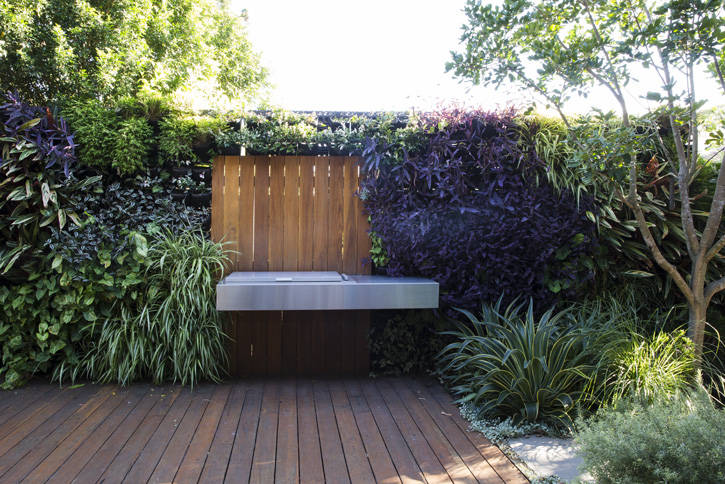Snow Pear
Pyrus nivalis, I use this tree more often than any other. I use…



In the right place, Vertical Gardens are like living tapestries that bring drama and theatre to a space by hiding an overbearing wall, and using its height to bring green scale to the area. The other reason designers like to use Vertical Gardens is because they are efficient at giving all these benefits to a space yet only taking up approximately 300mm width, depending on what system you use. There are a few systems to choose from on the market, though in the end, it’s the fact that it is structurally sound, the correct height, and that the installation method suits your space. Most are modular so you have flexibility in height and width of your garden.
Vertical Gardens lend themselves perfectly to a commercial application, and we are increasingly seeing examples of buildings smothered with greenery, as it contrasts beautifully with modern architecture, like steel, glass, concrete or timber. Given that Vertical Gardens should be as tall as possible these commercial structures make the perfect backdrop, though highlight the need for hardy plants.
The fun part is planting Vertical Garden! There are no rules when it comes to the selection of plants for your Vertical Garden although low growing ground covering plants work well. Try to choose plants with a habit of swamping and disguising the individual containers or mechanics of your wall. Choose plants that grow up, down and sideways as well out. Choose plants that don’t require regular tip pruning, rather, only the occasional separation of drifts. Choose plants that are tough. Beyond this, plants should suit the design intent of the home and garden. The Vertical Garden can be as crazy or as sedate as you like by selecting plants that convey this.
Large Vertical Gardens tend to dominate the space so the scene around it should be very simple and not fiddley, so it doesn’t compete with the Vertical Garden.
